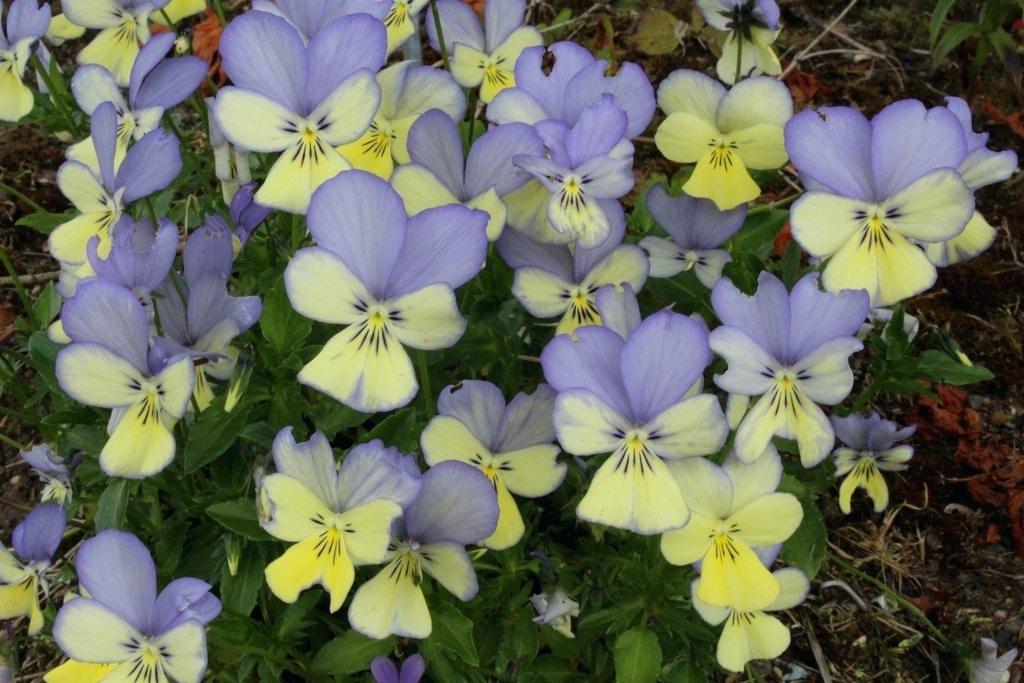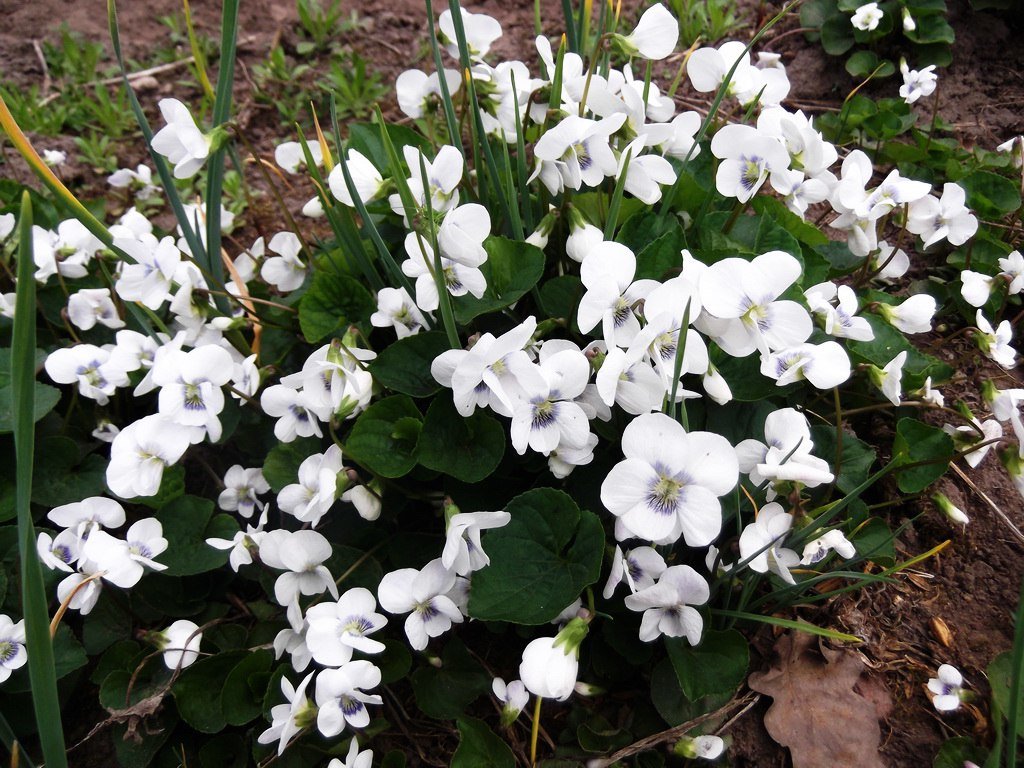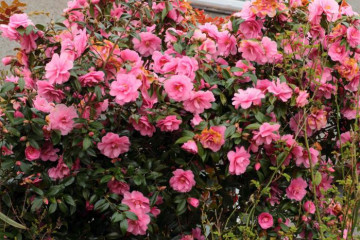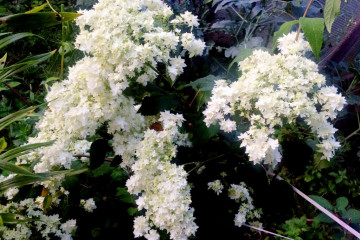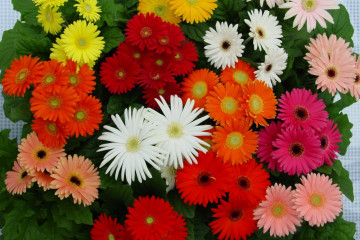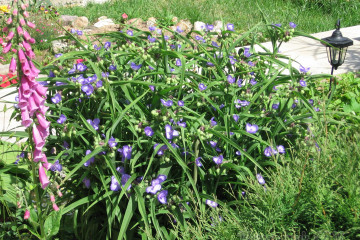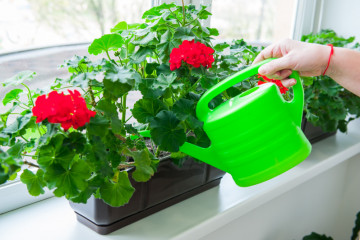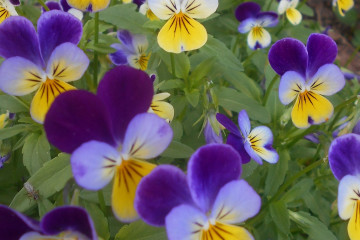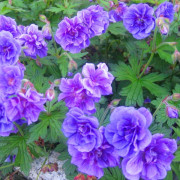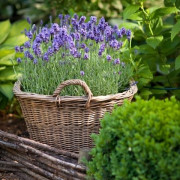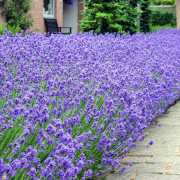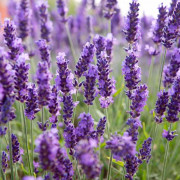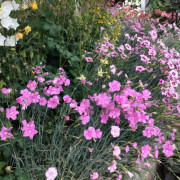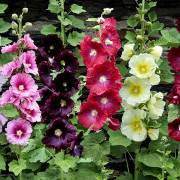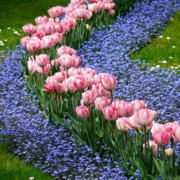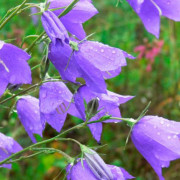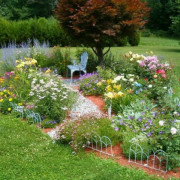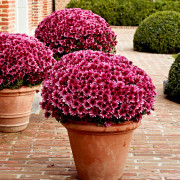Violet garden perennial in the open field
Content:
A perennial ornamental flowering plant, the violet is a favorite flower of millions of gardeners around the world. An endless variety of colors and ease of care are its most important advantages.
What does a garden violet look like
The genus of violets (Víola) has more than 500 species. It happens perennial and annual. Single bisexual flowers, each with 5 stamens, petals and sepals, grow on long single shoots. There are one-color, two-color and three-color. Almost all of them have a strong, persistent and very pleasant aroma. The flowering period is spring and summer. They coexist well with conifers, ornamental and fruit shrubs, but are also suitable for alpine slides, pots, flower beds.
Fruits are capsules with numerous small seeds, after ripening they open on their own. Having planted just a few pieces, in a few years you can get an excellent blooming rug. The leaf is simple or pinnately dissected, usually of a dark green hue. The bushes themselves grow 10-40 cm in height, have a thin, slightly branched rod root. Garden flowers, similar to violets in indoor pot culture, have their own characteristics.
The second popular name for garden violets is Pansies. Under natural conditions, it occurs throughout the temperate zone in the mountains, forests, along the banks of rivers and lakes. Some species grow in swampy lowlands and even in the tundra. Historically, the violet has another name Saintpaulia, given in honor of Baron Walter von Saint-Paul, president of the German dendrological society, who donated the seeds to the botanist Hermann Wendland, who first described this genus of plants.
Common varieties - a short description
Among the huge variety, the most popular varieties are listed below.
Graceful... Violet perennial 10-20 cm tall, coarse-toothed leaf, flowers up to 4 cm in diameter, blue-lilac or yellow. It blooms in spring and continues to delight until autumn. Prefers partial shade, nutritious soil, suitable for rock gardens.
Horned perennial... Bush 15-25 cm high with a creeping and strongly branching root. Gradually forms a dense flowering cushion. The leaf is oblong ovate with a jagged edge up to 6 cm long. Flowers are usually purple-lilac with a yellow spot. It opens from May to September. Prefers dry, sunny areas and moderately fertile soil.
Labrador... Perennial fragrant garden violet. Compact bush only 5-10 cm tall. The leaf is rounded heart-shaped, bronze or dark purple in color. Pink-carmine flowers bloom in May-June. A cold-resistant variety that tolerates partial shade. The soil prefers moderately fertile, moist.
Manchu... Perennial 6-20 cm high. Rhizome is short. The leaf has an ovate-lanceolate shape on a long petiole. A dark purple flower with a diameter of 2.5 cm on a long peduncle. On one bush, from May to June, 8-14 flowers bloom at the same time. There are varieties with double and variegated petals. Easily multiplies by division of clumps, as well as self-seeding. Moisture and light-loving, cold-resistant.
White garden violet... A very rare species that is extremely difficult to acquire. It is grown in specialized botanical nurseries to replenish the disappearing natural population.But on sale you can find seeds of hybrids called white butterfly violet perennial or sister, having the same color of flowers. It reproduces easily by self-seeding.
Features of caring for a garden violet on the street
Having once planted a violet variety you like in the garden in the open field, in the future you can admire its growing rug for many years, only gaining beauty.
- Temperature
Mostly garden violets are cold-resistant. They bloom first in spring, and many varieties continue to delight with beautiful flowers until autumn. The preferred temperature in the warm season is + 20-24 ° C. In case of heat + 30 ° C and above, it may stop blooming.
- Lighting
Depending on the variety, either a well-lit area or a semi-shady area will be required. But there are varieties that prefer to be in partial shade part of the day, and partly in the shade. They are planted mainly near fruit or ornamental shrubs.
- Watering
All varieties prefer soft water at the same temperature as the environment. To obtain the desired softness, add a little apple cider vinegar (1 tsp per 3 liters of water) or citric acid (5 crystals per 1 liter) to the water.
- Spraying
In the hottest season, in the mornings and evenings, it is recommended to arrange a warm shower for the violets from a sprayer or watering can with small holes, but not to allow excessive flooding of the roots.
- Humidity
The optimum level of humidity is about 60%. If pansies do not like waterlogged soil, such conditions can be provided only by light shading and planting near any body of water - a pond, stream, pool.
- Priming
The soil needs light, loose, moderately fertile, capable of retaining moisture for a long time. Perlite and vermiculite are the best additives for loosening and structuring, but you can get by with the introduction of peat and a small amount of washed river sand into the soil. It is also useful to add fine charcoal, and periodically sprinkle ash around the bushes.
- Top dressing
The first fertilization is in the spring. Any complex mineral for flowering plants will do. The most important is the content of potassium, phosphorus, nitrogen. The dosage should be halved against the manufacturer's recommended dosage. Fresh manure must not be used as it will burn leaves and roots.
Re-feeding will be required after the first buds bloom, and then every 2 weeks.
Preparation for wintering
Annual odorous varieties in the fall with the arrival of frost are completely removed from the beds. Perennials are left for the next year, and on the third they are completely removed, since they grow too much, losing their decorative effect.
In the fall, you need to remove the dry parts of the plant, wilted peduncles. Usually by this time the seed pods had already opened and scattered. Planting is not required additionally.
Under favorable natural conditions, spring violets will sprout independently after winter. It will be possible to leave successful seedlings, or use for transplants.
Possible growing problems
The fragrant flower practically does not cause problems, resisting unfavorable factors to the last. This makes him one of the leaders in survivability.
Diseases
Among the infectious diseases of garden violets, there are:
- rust;
- blackleg;
- gray and root rot;
- powdery mildew;
- spotting.
It is best to urgently remove the affected plants, or try to save them by treating them with a specialized preparation: Topaz, Fundazol, Fitosporin. Fitovlavin, etc. The intensity of watering violets for this time should be reduced.
Pests
The nibbled edges of the leaves are a symptom of the defeat of the violet mother-of-pearl and clover scoop. Against them, they are treated with tobacco infusion or karbofos.
Common pests such as thrips, slugs, aphids, and spider mites are also found on garden violets. Treatment with specialized insecticides helps against them, as well as spraying the planting with an ash solution.
Other problems
Withering and spots on the leaves are a signal that the plant is bad in this place.
Possible reasons:
- too dark;
- too hot;
- excessive watering;
- lack of nutrients.
Common mistakes when growing
The shallow root system means that loosening can easily damage the violet. However, the looseness of the soil is good for her. This is achieved by mulching and structuring the soil.
The second common mistake is thickening. Plants should be 15-20 cm apart from each other.
A street violet white or of another color is an excellent purchase for a garden, a rabatka, a flower bed. It is grown in hanging containers and pots. Everywhere, her lovely and brightest flowers look appropriate and extremely aesthetically pleasing.

